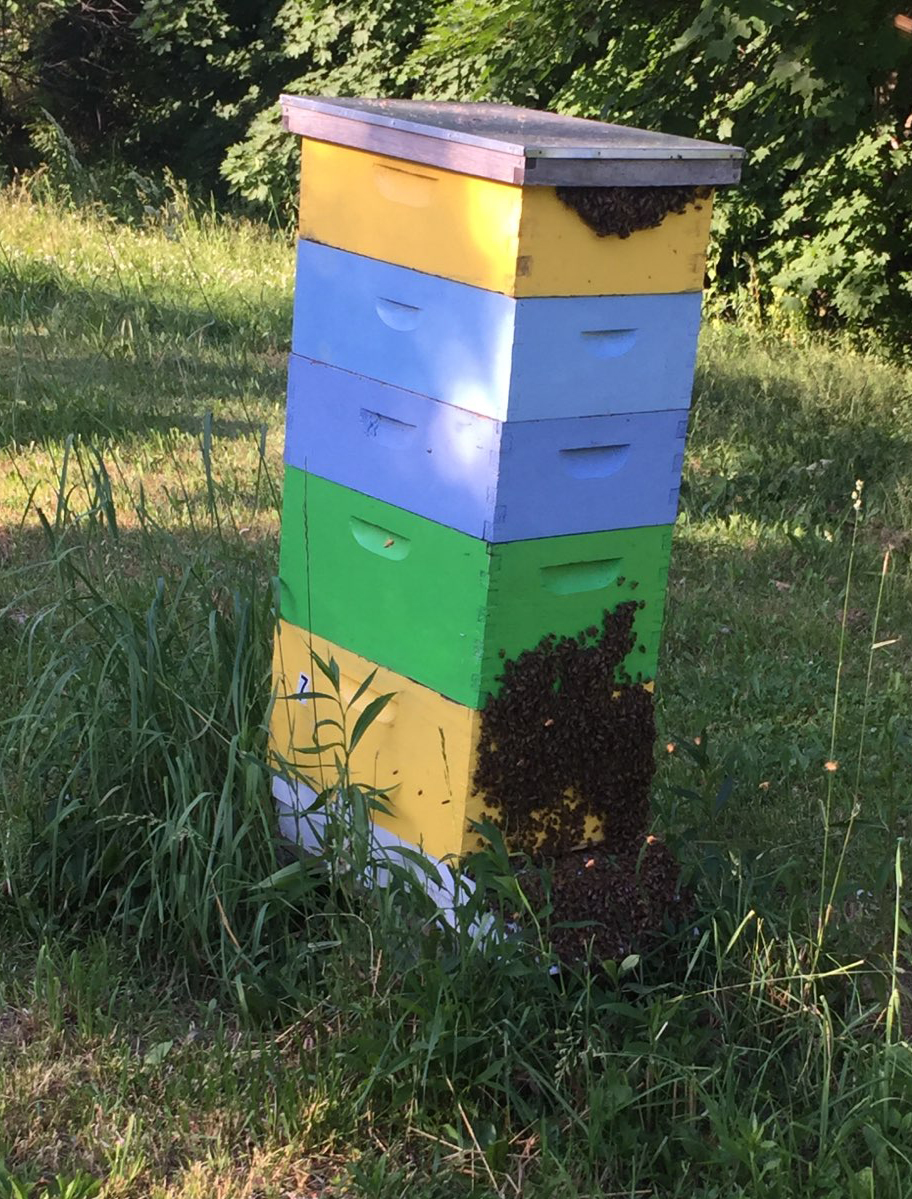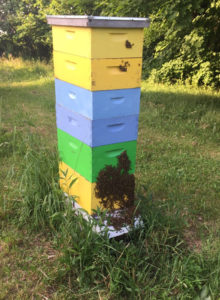Bee Lines: Helping bees keep their cool
by Sam Hall –
Shortly we will be approaching high summer here in Western New York. The honey bee population peaks in July. There is something to watch for the last couple of weeks in July and that is what is called a “dearth of nectar”, which simply means there is not much nectar out there for the bees to bring in.
In this regard every few miles or less is a microclimate. You may be fortunate enough to be in an area where there is a new crop of alfalfa coming into bloom for the second cutting in late July or there may be a grove of flowering trees that are blooming at that time. Generally, I figure there will be a couple of weeks sometime after the middle of July I will be feeding my bees as I want the population to stay high until the Golden Rod is in bloom in August and September. In my area this is a really large flow.
You can tell when your bees need feeding, as the hive will start feeling lighter. If you have bees, right now is good time to take hold of the back of the bottom board and lift up so you can get a feeling of what the weight of the hive is. When you do the same thing the third and fourth week of July and the weight is lighter, start feeding the 50:50 sugar: water syrup. This will keep them raising brood and keep the population high for the golden rod flow.
Another reason to keep the bee population high is that the Varroa mite population peaks in August. This year I hope to have raised a few queens of my own that will be ready to be put into colonies in August, interrupting the Varroa reproduction cycle resulting in lower populations of Varroa going into the winter. I have read that queens produced and mated after the summer solstice have a better chance of overwintering successfully than those raised earlier. I would be interested in hearing from anyone that has found this to be true.


Recently, I had a colony that experienced severe bearding. This is where you will see thousands of bees on the front of a hive doing nothing but hanging there. This is the total fault of the beekeeper, i.e. me. I had failed to provide adequate space in the hive for them to expand. These bees were forced out of the hive to lower the temperature in the hive so the wax would not melt. Temperatures slightly above 140 degrees Fahrenheit will cause the wax to melt. It is not hard to reach such temperatures inside a hive in the summer. Sometimes, if this happens, you may see the bees on the landing board fanning their wings outward. This is to draw hot air out of the hive and increase air circulation.
When I saw the bearding, I immediately added another honey super and put two small twigs under each corner of the front of the inner cover. This gave direct ventilation to the outside air, in addition to the upper entrance. Within a few minutes the top cluster on the outside had gone back in to work. I will start pulling honey this coming week this will also help by getting more empty supers back onto this colony and others.
As I have aged I have become less critical of other people and more critical of myself. Last Saturday I did not go to the funeral of a friend because I did not know his family well and just plain did not want to go. I instead spent the day with my bees and thought about him. He lived a long life as I have but in his later years Alzheimer’s disease attacked his intellect. The last times I saw him in the nursing home, he did not know me or anyone else.
Observing the bees I realize all life is temporary, and also everlasting. To me being with my bees is like being in church. They ever fascinate me and renew me.
Aldous Huxley wrote, “The Secret of Genius is to carry the spirit of the child into old age, which means never losing your enthusiasm”. I try not to.
Sam Hall is a Western NY beekeeper who first worked bees as a child growing up on a ‘dirt farm’ in Allegany County, NY. He has kept bees for most of his adult life and believes that his mistakes ‘far outnumber his successes.’